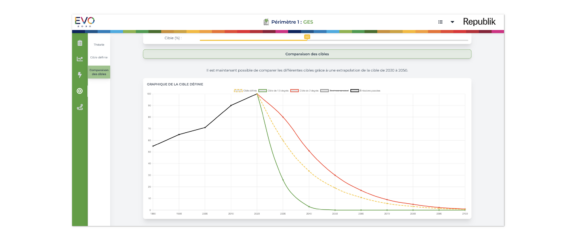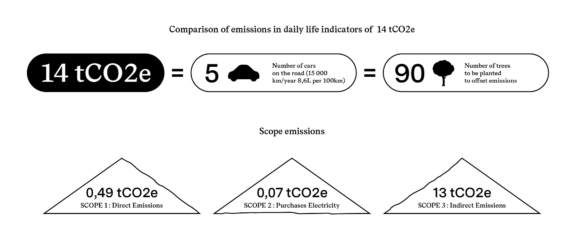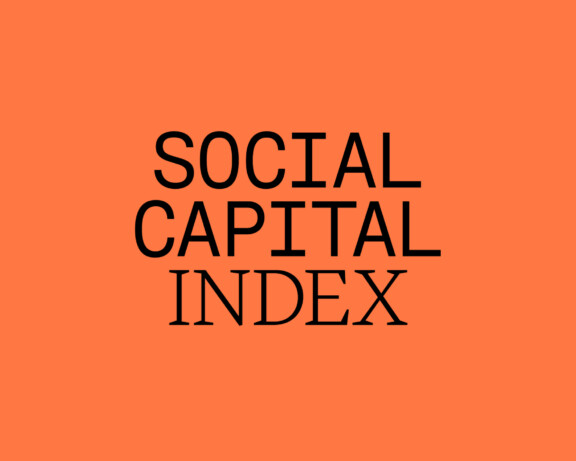Republik measures its greenhouse gas (GHG) emissions

Share:
Why is it important for creative agencies to measure their GHG emissions?
We keep telling our clients that, when it comes to making an impact, actions speak louder than words. If you communicate your commitments without backing them up with concrete actions, you’ll find yourself accused of greenwashing pretty quickly! Given that people are increasingly informed and mobilized, they won’t hesitate to tell you the hard truth.
This is why Republik wanted to fully understand what it’s like to calculate one’s GHG emissions before measuring the impact of its own clients. Having gone through all the stages of the process, we’re now able to provide better guidance to companies undergoing such a task.
One of Republik’s five mottos is “collective intelligence”. By making our results accessible to all, we hope to encourage other creative agencies and service companies to follow suit, thus allowing us to compare ourselves positively and adopt better practices to elevate our industries.
So what impact do Republik’s services have on our collective GHG emissions? Read on to learn about our key findings.
COESIO: A reputable, impartial and highly qualified partner in sustainable development
We requested the services of COESIO, a consulting firm that follows the guidelines of the internationally recognized Greenhouse Gas Protocol to calculate GHG emissions. Their team also developed the EVO2030 program, which is based on five proposed activation perimeters in conjunction with an integrated sustainability approach. The platform provides access to a scorecard and an interactive platform to better visualize results.

We worked together with COESIO throughout the process and participated in three workshops to determine our carbon footprint, our options to reduce it and, lastly, a roadmap for achieving those reductions.
Gathering data from the last several years was the first challenge we met (as you can probably imagine, finding your Internet bill from three years ago is no easy feat). But despite the difficulties, indicators for each of the Greenhouse Gas Protocol’s scopes that are relevant for estimating Republik’s impact and that can be realistically calculated have been successfully compiled.

Drumroll, please! Republik’s GHG emissions results
As a service company, our agency’s GHG emissions are not very high. We’re talking about 14 tCO2e (metric tons of CO2 equivalent) per year, for all 29 members of our team in 2021, the reference year for the calculation. Each person at Republik emits 0.3 kg of CO2 for every hour worked.

Direct emissions (scope 1) represent 3.5% of our total emissions, while emissions related to the electricity we purchased (scope 2) are only 0.5% of the total — thanks to Quebec hydroelectricity! If you’re good with math, you’ve probably already realized that over 96% of our impact is through indirect emissions (scope 3).
Leading this scope’s top three is the purchase of services (42%). It should be noted that many of these purchases were estimated since they were based on less accurate financial data, such as accounting-related expenses. Nevertheless, through extensive research, estimates were made based on the amount of data downloaded and the average time spent by teams in video conferencing with the camera on, which increases the data used and thus adds to the carbon footprint.
Staff transportation comes in second (33%), despite the fact that 80% of our team uses eco-friendly transportation. Finally, the purchase of goods, such as office supplies and computers, takes third place (19%).
How Republik aims to reduce its GHG emissions
Republik now has a reduction plan for its GHG emissions. Some of the main areas for improvement are :
- Integrating more vegetarian foods during our events and drafting an internal policy to this effect;
- Drafting an internal policy to limit or optimize our team’s travel to production locations;
- Developing sustainable supply procurement criteria;
- Educate our team on the best ways to adopt more sustainable behaviors.
It’s crucial that such policies be put in writing and shared with the entire team to support GHG reduction initiatives. Each employee must be informed as to how they can participate in the solution. Any emissions that cannot be reduced should be offset in order for us to become a carbon-neutral creative agency.
Two organizations allowed us to compensate for the carbon emissions produced over the two years leading up to October 2022. Carbone Boréal plants trees and invests in research to fight climate change. Carbone Scol’ere funds educational workshops with young people on good environmental behavior.
A tool for measuring the environmental impact of our services
Republik also measured the GHG emissions produced by a typical service performed by the agency. The service studied included all phases of project development: execution (pre-production, production and post-production), travel to the production locations, purchase or rental of equipment, editing, data storage, the creation of a campaign to publicize the content we produced and the campaign’s lifespan online. It should be noted that the impact of the products promoted by the advertising campaigns carried out couldn’t be quantified in the carbon footprint. The feasibility of such a measurement will be investigated in the near future.
COESIO provided us with an adjustable tool that would allow us to calculate GHG emissions based on elements that change from one mandate to another. For example, certain mandates include production while others don’t. This way, we could model our GHG emissions depending on the nature of the mandate. This tool allowed us to optimize our services, raise awareness among our clients and offer them the possibility of compensating GHG emissions produced by the mandate.
The takeaway
Small and medium-sized firms with a low carbon footprint underestimate the impact they could have by figuring out their GHG emissions and creating a plan to reduce them. Thanks to our experience with COESIO, we hope to inspire other creative agencies to determine what their own GHG emissions are, which will hopefully produce a domino effect amongst our clients.


